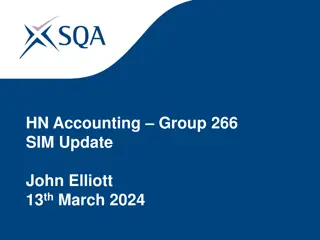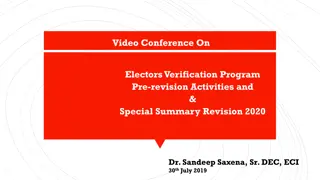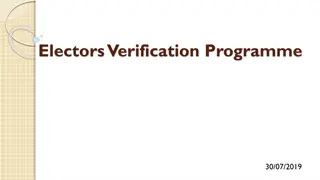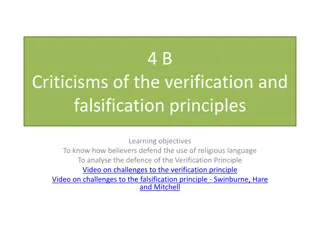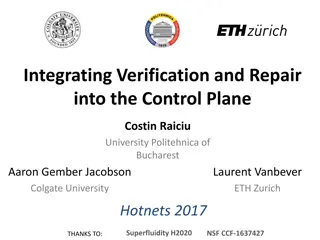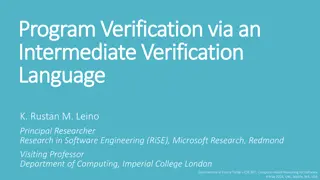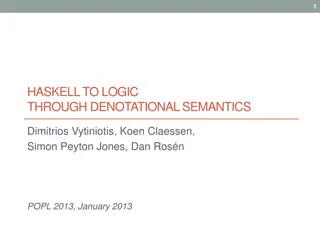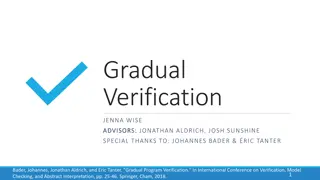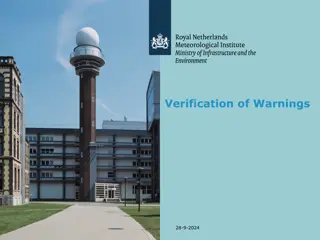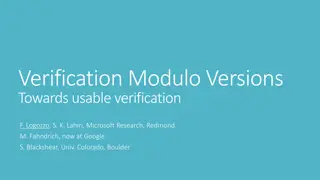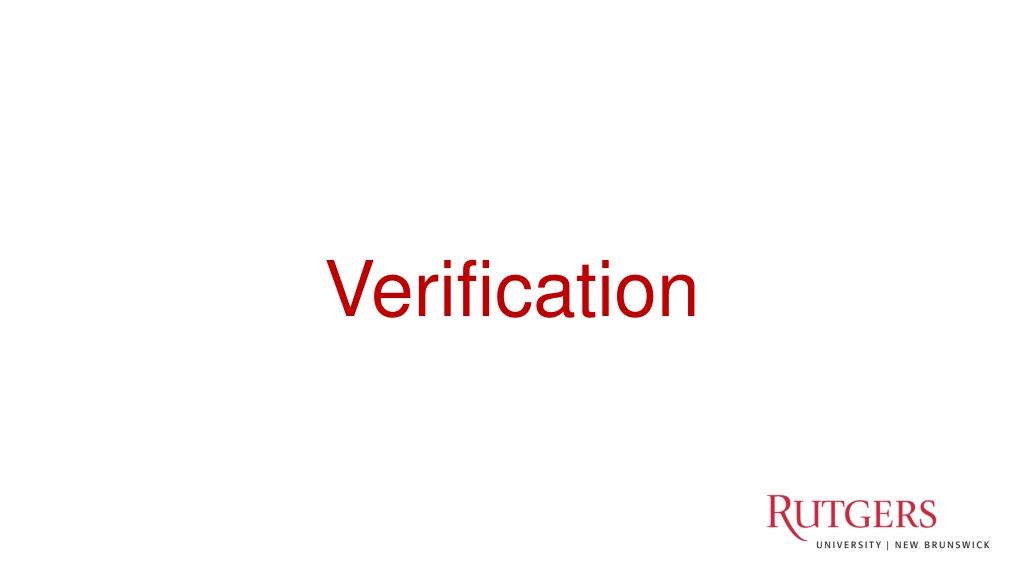
Understanding Network Complexity and Fault Management
Networks are intricate systems with various protocols and potential pitfalls such as physical faults and route misconfigurations. Effective management requires addressing human errors, peering points, and the impact of disruptions on connectivity.
Download Presentation

Please find below an Image/Link to download the presentation.
The content on the website is provided AS IS for your information and personal use only. It may not be sold, licensed, or shared on other websites without obtaining consent from the author. Download presentation by click this link. If you encounter any issues during the download, it is possible that the publisher has removed the file from their server.
E N D
Presentation Transcript
Networks are complex Many control plane protocols Protocols interact in complex ways, cascading effects Protocols must often work across administrative boundaries Significant outages often due to avoidable reasons Human errors cause >50% of outages Responding to physical connectivity disruptions Network is in a constant state of change
Physical faults Single cable fault or break can take out multiple ISP paths Cascading effects due to load on other links New inter-dom paths taken Peering points overloaded Drop traffic worldwide https://www.thousandeyes.com/blog/smw-4-cable-fault-ripple-effects-across-networks
Route misconfigurations Leaks: e.g., ISP announces more specific routes to a destination Prefix hijacking Likely to be misconfigurations e.g., Youtube08 But can also be deliberate: MITM E.g., Belarus https://blog.thousandeyes.com/nanog-68-decoding-performance-data-internet-outages/
Some operator requirements Know answers to simple questions Can A talk to B? Reachability A and B can be hosts, IP prefixes, slices Are there loops, blackholes? Do slices leak? Know the effects of a change, preferably before it happens What-if analyses Link failures, protocol messages accepted from peers Answer these Qs fast to keep up with change in the network
Verification (software) For a program P, property X, input I, asking: Will P satisfy X on all inputs I? For what inputs I will P satisfy property X? Example: Can a program f(x) := return x + 1 guarantee output f(x) > x? Does g(x, y) := return x/y execute without exceptions always? Related problem: Synthesis Can I generate a program P that satisfies X on all inputs I? Example: Using binary & arithmetic operators alone (+, -, &, ) produce a program that determines whether input (int) x is a power of 2
SDN verification Program + data plane should satisfy desired properties Single box state + program Network Verification Control plane verification Do routing protocol configurations result in desired data plane properties? Compute fixed points Consider failures, route protocol message injections Routing Algorithm control plane data plane Data plane verification Do the devices together satisfy desired properties in the data plane? Compute logical representations Loop-free, blackhole-free, waypoints 1 0111 2 3
Decision Procedure: An efficient algorithm that answers yes/no Ask the question under assumptions about network change: static, incremental, or dynamic for all M, does N satisfy P? Property of interest: Loop freedom Blackholes Waypoints Equivalence Sequence of messages: Packets, Routing protocol Link failures Network representation: Data plane Control plane Need good abstractions
A simple example: Modeling firewall rules Assume packets just have 2 bits; there are only 2 ports Firewall config: 10 -> fwd(2); x1 -> fwd(1). All others dropped Boolean representation of the network: N: (d1 & ~d0) | ((d1 | ~d1) & d0) Property: only the packets from 00 are dropped P: (~d1 & ~d0) Messages (M): all combinations of Boolean variables d0, d1 Verification question: for all d0, d1, is formula P <=> ~N valid? i.e., Is P <=> N a tautology? Decision procedure: SAT solver
Verification, testing, synthesis, eq checks Verification: for all M, does N satisfy P? Testing: For the given M, does N satisfy P? Synthesis: Given P, can you produce an N that satisfies it For a given set of M? (including for all M) Let N be another network representation Equivalence checking: For all M, do N and N behave in the same way with respect to P?, i.e., i.e., either both satisfy P or both violate it
Header Space Analysis Ack: Thanks to slides from Peyman Kazemian! https://web.cs.ucla.edu/~varghese/NETWORK_VERIFICATION_COURSE/L ecture4.pptm
Abstracting across devices Input ACL IP Output ACL MAC Table Spanning Tree VLAN Table table Filtering Rules ARP Table MAC Table Spanning Tree Input ACL IP Output ACL table MAC Table MPLS Mappings IP Table ARP Table MAC Table Spanning Tree
Vision for Network Verification Input ACL IP Output ACL MAC Table Spanning Tree VLAN Table table Filtering Rules ARP Table MAC Table Spanning Tree Input ACL IP Output ACL table MAC Table MPLS Mappings IP Table ARP Table MAC Table Spanning Tree
Networks as geometric transformers Model header as point in high dimensional space and all networking boxes as transformers of header space P1 P2 Packet Forwarding Action Match Send to port 2 Rewrite with 1x01xx..x1 0xx1..x1 MATHEMATICAL FRAMEWORK TO REASON ABOUT WHICH SET OF POINTS ENTERING CAN EXIT NETWORK 14
Header Space Framework Step 1 - Model a packet, based on its header bits, as a point in {0,1}L space The Header Space Header 0xxxx0101xxx Data 01110011 1 L Sets of packets (ternary expressions) are hypercubes in {0,1}L space
Header Space Framework Step 2 Model all networking boxes as transformer of header space 1101..00 3 Transfer Function: 1 Packet Forwarding 1110..00 2 Match Action + + 0xx1..x1 11xx..0x Send to port 3 Rewrite with 1xx011..x1 Rewrite with 1x01xx..x1 Send to port 2 16
Transfer Function Example IPv4 Router Forwarding Behavior 172.24.74.x 172.24.128.x 171.67.x.x Port1 Port2 Port3 1 2 3 (h,1) if dst_ip(h) = 172.24.74.x T(h, p) = (h,2) if dst_ip(h) = 172.24.128.x (h,3) if dst_ip(h) = 171.67.x.x 17
Composing Transfer Functions By composing transfer functions, we can find the end to end behavior of networks. R1 R2 R3 T1(h, p) 18
Header Space Framework Step 3- Header Space Set Algebra. Intersection Complementation Difference Check subset and equality condition. Every region of Header Space, can be described by union of Wildcard Expressions. (example: 10xx U 011x) Goal: do set operations on wildcard expressions. 19
Computing Reachability All Packets that A All Packets that A can use to communicate with B can possibly send All Packets that A can possibly send to box 2 through box 1 A T-11 Box 1 Box 2 T2(T1(X,A)) T-12 T-11 T1(X,A) T4(T1(X,A)) T-14 T-13 All Packets that A can possibly send to box 4 through box 1 B Box 4 Box 3 T-13 T3(T2(T1(X,A)) U T3(T4(T1(X,A)) PROPAGATE MILLIONS OF SETS OF HEADERS IF DONE NAIVELY 20
Computer Networks Abstractions and algorithms for communication among interconnected machines End to end and per-node A research experiment that escaped the lab and became fundamental to the world as we know it Architecture; transport; network data plane; network control plane; verification
Thanks, and all the best! What next? Live with deeper appreciation of the Internet and networking Does more bandwidth matter? Why do Internet apps run slowly? Why am I seeing outages in connectivity? Put your programming knowledge to good use Significant tech work builds on the fundamentals in this course Build, debug, optimize networked applications Principles to organize communication across machines Go deeper Research projects, independent study, theses,




